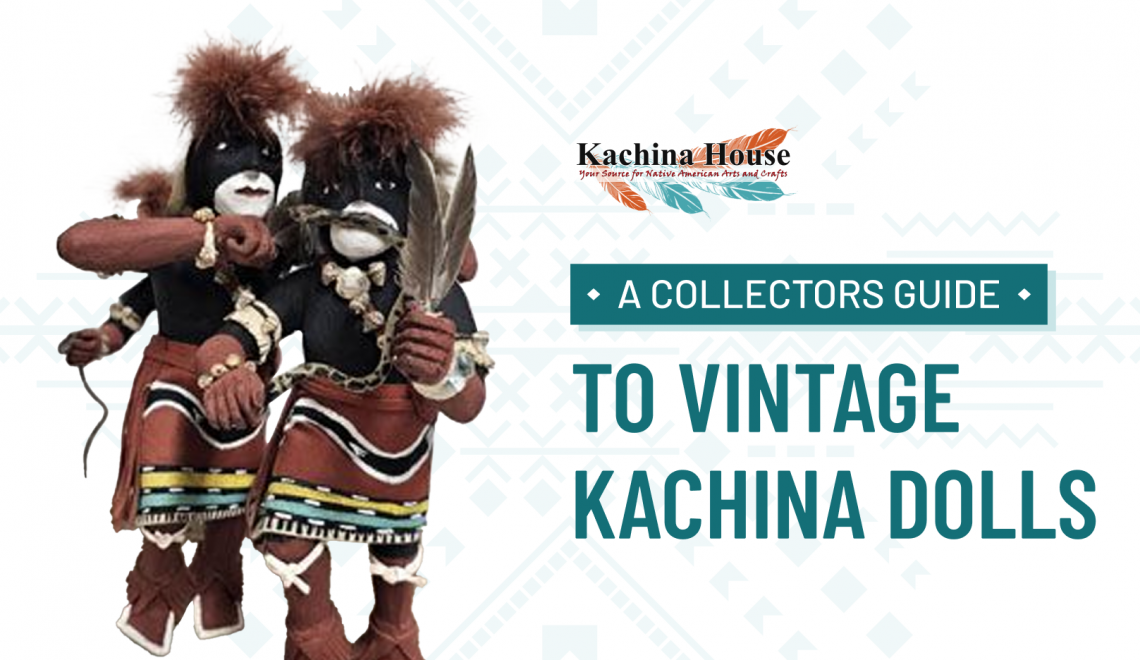
Welcome to the world of Katsina (Kachina) dolls—a realm rich with cultural significance, artistic craftsmanship, and historical value. Whether you’re entirely new to Kachina House or a seasoned collector looking to deepen your understanding or enhance your collection, this guide will provide valuable insights into identifying and appreciating these unique artifacts.
Understanding Kachina and Katsina Dolls
First, it’s essential to clarify a common misconception: the term “Kachina” is used universally, but this is inaccurate. We specifically use terminology to distinguish between dolls made by Puebloan and non-Puebloan tribes.
Historical Context and Artistic Influence
Hopi Katsina imagery has been an iconic symbol of the Southwest ever since railroads first made their way across the region in the 1880s. The arrival of trains spurred tourism focused on Native American culture, leading the Hopi and Zuni to carve dolls not only for tribal use, but also for sale or trade. Native American trading posts, like Keams Canyon founded in 1875, carried a large inventory of Hopi Katsina dolls, pottery tiles, and jars adorned with painted Katsinam.
Numerous well-known artists in the early 20th century traveled to the region to capture the people and their dances. Maynard Dixon, for example, visited the Hopi in 1902 and frequently returned, depicting Katsina societies in his works. Contemporary artists continue to draw inspiration from Katsina dolls and Hopi culture, reflecting this heritage in their paintings and sculptures.
How to Identify Vintage Kachina Dolls
Identifying a vintage Katsina (Kachina) doll involves several factors, including materials, craftsmanship, and provenance. Here are some key aspects to consider:
-
Material and Construction:
- Hopi Katsina Dolls: Look for dolls carved from a single piece of cottonwood root. The quality of the carving can indicate age and authenticity. Traditional or Old Style Katsinam often have a weathered look due to their age and the natural materials used.
- Navajo Kachina Dolls: These are usually assembled from machine-made parts. However, vintage Kachinas could be quite similar to their Hopi counterparts. They might show signs of wear on their painted surfaces or the materials used for their clothing and accessories. The masks and coloration will be inconsistent with the Hopi counterpart.
-
Artistic Style and Detail:
- Hopi Katsina: Pay attention to the level of detail and artistry. Authentic Hopi Katsinam are known for their meticulous craftsmanship, with intricate patterns and vibrant colors. The expressions and poses reflect specific spiritual beings and cultural stories.
- Navajo Kachina: While often simpler in construction, vintage Navajo Kachinas can still exhibit unique artistic touches. Look for individual customization in paint colors, clothing and adornments.
-
Provenance and Documentation:
- Provenance refers to the history of ownership and origin of the doll. Authentic vintage Puebloan pieces often come with documentation or can be traced back through previous owners. Provenance can significantly increase a doll’s value and desirability.
-
Condition:
- The condition of the doll is crucial in determining its value. While some wear is expected in vintage items, severe damage or extensive repairs can affect the doll’s worth. Original paint, intact accessories, and minimal damage are positive indicators.
How Do I Know If My Doll Is Valuable?
Determining the value of a Navajo Kachina or Hopi Katsina doll involves evaluating several factors:
- Rarity: Some specific dolls are more scarce than others, making them more desirable to collectors. Some created by renowned artists can fetch higher prices.
- Authenticity: Authenticity is critical. Dolls made by recognized artists or those with strong provenance are typically more valuable.
- Condition: As mentioned earlier, the overall condition of the doll plays a significant role in its valuation. Dolls in excellent condition, with original features intact, are more sought after.
Collecting vintage Kachina and Katsina dolls is a rewarding endeavor that connects enthusiasts with the rich cultural heritage of the Puebloan and non-Puebloan peoples. By understanding the distinctions between these dolls, recognizing key identifying features, and appreciating their artistic and cultural significance, collectors can make informed decisions and develop a deeper appreciation for these remarkable artifacts.
Whether you’re just starting your collection or looking to add to it, the journey into the world of Kachina and Katsina dolls offers endless opportunities for discovery and connection with Native American culture. Happy collecting!


When I was a child in 1977, and visiting Durango with my grandparents, my grandmother purchased a handful of miniature ceramic kachinas made by MEG of Phoenix, Arizona. I do not recall where exactly they were purchased, but I remember there being a wide variety on a table with a salesperson who may have been the/a crafter. I was enamored with the diversity, the color, and each doll’s distinctive appearance. When my grandmother asked me which she should purchase, I said something to the effect of “One of each.” She replied that she could not, and made her choice of a handful with the intention of making them into a necklace, but when she passed, they would come to me. She never did make a necklace, but I did receive them when she passed, and they sit in a curio cabinet in the family room watching television and being themselves as, bit by bit, I find more of their “Made by MEG” kin to join them.
Oddly, as a collector of these particular kachina, I am not concerned about their financial value, as I intend to pass them on to my child, or, if they should come into being, my grandchildren. I see the kachina as being part of my family, like cousins and aunts and uncles from some forgotten branch of the family, or just plain “adopted” like what’s done with good friends.
All that said, I have been unable to find any information about MEG, except what’s written on the underside the card each kachina has attached to it. I have no idea how many different kachinas they made, nor the history, or even the crafter(s). Does anyone perhaps know anything?
My many thanks!